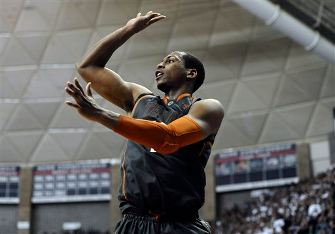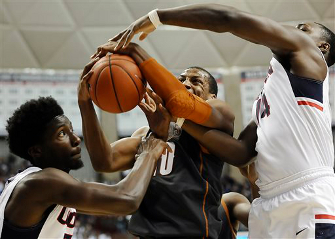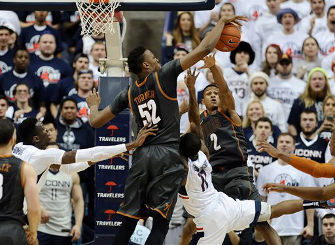#7/9 Texas Longhorns 55, #24/22 Connecticut Huskies 54
Late in Sunday’s game in Storrs, it looked like the Longhorns were letting a golden opportunity slip away. Texas had built a lead as large as seven points just before the under-16 media timeout in the second half, but could only manage a trio of free throws over the next seven minutes. UConn wrestled momentum from the Longhorns and seemed poised to grind out another victory at home.
Texas did not help its own cause as the minutes ticked away. Despite holding UConn to just one field goal in the final nine minutes of the game, the Longhorns continually found ways to turn the ball over and failed to secure crucial rebounds and loose balls, leading to a handful of free throws for the Huskies. Still, despite all of that, an unexpected free-throw miss by Ryan Boatright with 15 seconds on the clock left the door open for Texas.
The Longhorns brought the ball up the court and ran a dribble weave about 25 feet from the basket as the seconds disappeared. Coach Rick Barnes started signaling for a timeout on the sideline, and it was granted with 4.4 to play, just before Javan Felix could hoist a desperation three from well beyond the NBA arc. After Texas drew up a play and came out on the floor, UConn’s Kevin Ollie surveyed the setup and called his own timeout.

Jonathan Holmes watches his game-winning three
(Photo credit: Jessica Hill/Associated Press) 
UConn made things difficult inside for Texas
(Photo credit: Jessica Hill/Associated Press) 
Myles Turner made key plays in the final minutes
(Photo credit: Jessica Hill/Associated Press) |


